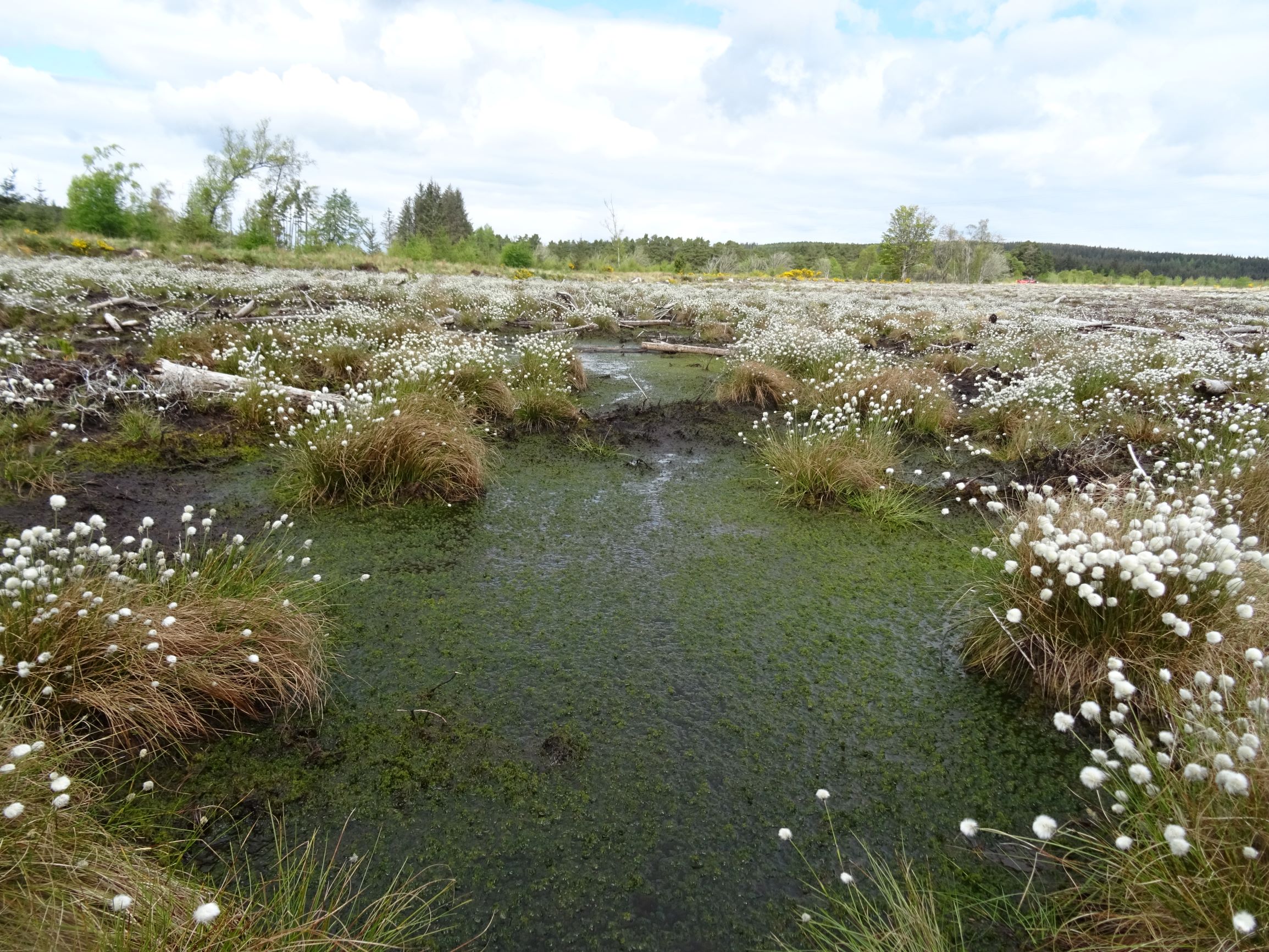Peatland Carbon Code
The Woodland Carbon Code is based on trees’ natural ability to absorb carbon dioxide. By providing the framework for measuring and certifying the volume of carbon dioxide stored in a woodland, it also provides the mechanism for offsetting carbon dioxide emissions elsewhere.

Basic Facts and Information about Our Peatlands
Peat is partially decayed vegetation or organic matter, and forms in wetland conditions where flooding or stagnant water slows the rate of decomposition. Peatlands are areas of land supported by a naturally accumulated layer of peat:
- They cover 3% of the world’s land area – an estimated 4 million km2.
- Peatlands are the world’s largest terrestrial carbon stock – storing at least 550 gigatons of carbon globally – more than twice the carbon stored in all the world’s forests.
- Peatlands in the UK account for 10% land area, but up to 80% are degraded to a greater or lesser degree.
The Creation of Saleable and Credible Peatland Carbon Units
The Peatland Code’s calculations are supported by rigorous scientific research. Its projects must also undergo robust checks and inspections. Respected science and thorough scrutiny ensure that the Pending Issuance Units (PIUs) and Peatland Carbon Units (PCUs), whose issuance the Peatland Code authorises, are credible, authentic, and valid.
Credibility and trust in the claim that each PCU represents one tonne of prevented emissions provides the bedrock for any market in PCUs and enables environmentally conscious organisations to alleviate their GHG emissions and enhance our biodiversity through buying PCUs.
The Principles Underpinning the Peatland Code
This widespread damage to the UK’s peatlands means that, far from drawing down CO₂ from the atmosphere, they are currently releasing large volumes of CO₂ as they slowly deteriorate. Indeed, one hectare of heavily degraded peat bog can emit 25 tons of CO₂e every year.
In aggregate, the UK’s degraded peatlands are estimated to release 20 million tonnes of CO₂e annually, accounting for roughly 4% of the UK’s total annual greenhouse gas emissions. Restoring our damaged peatlands can therefore play a valuable role on regulating climate change. It will also help combat our biodiversity crisis.
The Peatland Carbon Code was therefore developed to quantify and verify the CO₂-related benefits from peatland restoration projects. By measuring the GHG emissions both before and after restoration, it can calculate the emissions saved by restoring the degraded peatlands.
How Does the Peatland Code Work?
The process for generating PIUs and PCUs under the Peatland Code has similar principles to the Woodland Carbon Code, even if the practical steps are different:
- Registration: Basic details of the restoration project (the carbon calculator, a map etc) are necessary in order to register it with the UK Land Carbon Registry.
- On-Site Assessment: This quantifies the existing levels of CO₂e emissions and details the work necessary to rewet, revegetate and restore the site i.e. the restoration plan.
- Validation: Akin to the WCC, this process involves a series of checks and inspections regarding the efficacy of the proposed plan.
- Issuance of PIUs: Once validated, the project’s account on the UK Land Carbon Registry is issued with the amount of PIUs corresponding to the number of PCUs the site is expected to generate.
- Verification: A recurring onsite inspection to verify that the peatland is being restored and that emissions have declined. Assuming they have, a portion of the PIUs are commuted to PCUs.
As with the Woodland Carbon Code, CarbonStore can help you every step of the way. We can register your project, arrange its validation and oversee its verification. Moreover, Tilhill’s ecology team, with its long experience in peatland restoration, is ideally placed to prepare the restoration plan and supervise its implementation.
